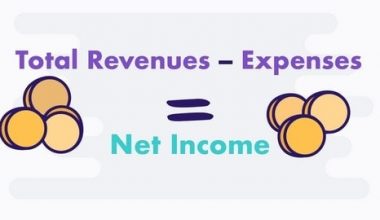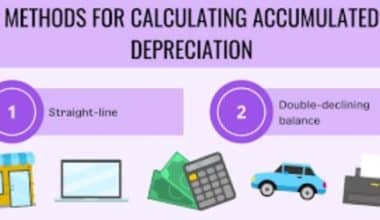While there are many goals for performance evaluations, one of its most crucial goals is to enable managers to provide feedback to staff members. Performance review comments must be carefully prepared, though, just like any other kind of feedback, to ensure that employees comprehend this crucial advice and what they must do moving forward.
Effective performance review comments give useful suggestions that employees may utilize to develop and improve while also recognizing the qualities and successes of the employees. So in this article, we will discuss how to make performance review remarks that are more persuasive and inspiring to employees who are eager for direction and feedback.
What is a Performance Review of an Employee?
An employee’s work within a specific time period is formally evaluated in a performance review, which is sometimes referred to as a performance evaluation or performance appraisal. Managers examine an employee’s overall performance, pinpoint strengths and flaws, provide comments, and assist in goal-setting during an employee performance review.
How to Write a Review of an Employee
To make an effective employee evaluation, follow these steps:
#1. Examine the Job Description for the Employee
Get a copy of the most recent job description for each employee and go over the specifications. You might have modified your expectations after closely collaborating with team members depending on each person’s normal performance and skills. Rereading each team member’s job description will help you frame your review in light of their initial anticipated duties.
As you read job descriptions, take into account how successfully your team members carry out their duties and satisfy the qualifications for the position. Take note of the things that each team member performs well, the areas where they may improve, and the times when they go above and beyond. Make your evaluation remarks based on these notes.
#2. Point Out Areas for Development
Find last year’s assessments if you have collaborated with a team member for more than one review cycle. Reread each one carefully to refresh your memory on how each member of your team has previously done. Make a note of the problems they needed to solve and the places you thought could use some improvement.
Take into account the growth of your team members throughout the course of the year. Be as descriptive as you can when highlighting the areas where they’ve improved. Include information on any new skills, training, or certifications your team members have obtained in your employee assessments. In order to write a thorough evaluation that takes into account all of the improvements, try to keep in mind the entire year’s worth of work.
#3. Examine Weaknesses and Strengths
Making a list of each team member’s strengths and shortcomings using prior evaluations and job descriptions is the next step. This section of the employee evaluation notes can benefit from employing a SWOT framework, which stands for strength, weakness, opportunity, and threat.
Start by thinking about your strengths, which include your best qualities, notable achievements, and areas of expertise. Next, list the team members’ weaknesses, such as things that impede them from completing objectives. Third, think about chances for your team to perform at its best. Finally, include dangers that might have an adverse effect on their performance.
#4. Offer Practical Objectives
Employee evaluations can affect annual raises and promotion prospects in addition to assisting your team in making plans for the coming year. Consider ways to inspire your team members to raise their performance and develop their careers as you compose your employee assessments.
To decide what goals you can establish for the upcoming year, take into account the job descriptions of your team members, their prior performance, and your company’s strategic plan. Offer suggestions for attainable objectives that will help each person, your team as a whole, and your company as a whole.
#5. Offer Advice that is Constructive
Each member of your team will likely have strengths and weaknesses. Throughout your reviews, make an effort to include encouraging comments. When you identify a subject or talent that one of your team members is lacking, suggest a strategy that will assist them to advance. You can provide your team members with useful advice while still producing unbiased evaluations of their performance by offering constructive criticism.
#6. Encourage Employee Feedback
Give your team members plenty of time to reply to their reviews and offer feedback on your observations, assessments, and objectives. The more you involve them in the review process, the more likely it is that they will feel committed to establishing challenging goals and advancing important objectives.
What Not to Write in Comments on Performance Reviews
There are a few typical review traps you’ll want to avoid if you want to create insightful review comments that clearly communicate your meaning. Here are some things to avoid:
#1. Don’t Include Staff Demographics
Statements that mention demographics can be microaggressions, no matter how well-intended they are, and they can make your employees feel unpleasant at work. The following should never be mentioned in a performance review:
- Age
- Gender
- Race
- Sexual orientation
- Nationality
- And Religious affiliation is a factors
Instead of basing your criticism on an employee’s age, for instance, if you are pleased with their overall performance despite the fact that they are still in the early stages of their career as a professional, point out their individual accomplishments. You should always make sure that your remarks reflect your staff members’ proper pronouns.
#2. Steer Clear of Using Words like “Always” and “Never.”
When providing feedback, managers should avoid using absolute language like “always” and “never.” In addition to being rarely correct, these expressions can damage your relationship with the team member and the credibility of the remainder of your performance assessment comments. Instead, illustrate your point with clear language and illustrative examples.
#3. Avoid Using Feedback from Rumors
Always base your compliments or helpful criticism on your own observations, never on rumors or hearsay. When you begin a sentence with “I’ve heard…” or “Another colleague told me…”, your employees may quickly assume that you value someone else’s opinion over their own. Employee rapport and trust may suffer as a result. Instead, only speak about topics you have personally witnessed or experienced..
#4. Remember to Include the Workforce
Finding growth possibilities shouldn’t be the sole responsibility of management. Employee participation in this process can help to assure their buy-in and increase the possibility that they will use the input and advance in their positions. Instead of just giving a prescriptive solution, making ideas involves encouraging team members to think about their own alternatives.
#5. Refrain from Succumbing to Recency Bias
Recency bias is the propensity for people to base their judgments on current events rather than earlier events. This could exaggerate a worker’s most recent accomplishments or failures in self-evaluations, as well as criticism from peers and managers, at review time.
Recency bias, for instance, can lead a manager to ignore a star employee’s great performance and contributions over the previous six months in favor of the person’s recent tardiness. This can happen, for instance, if the employee in question has been absent from team meetings for a few weeks. They might no longer be eligible for a raise or promotion as a result of this.
What to Write in Comments on Performance Reviews
#1. Strike a Balance with Your Criticism
The key to providing feedback is balance. If you give your staff too much constructive criticism, they could become defensive and less receptive to your advice. The opposite of encouraging employees is to be overly positive without mentioning areas for development. The key to conducting effective developmental dialogues is to be careful to highlight both the areas in which your employee succeeds and those in which they have space to grow.
#2. Employ SBITM (Situation-Behavior-Impact) Feedback Paradigm
The Situation-Behavior-Impact (SBI)TM feedback model, created by the Center for Creative Leadership, is a useful tool for helping you explicitly characterize each element of the feedback you’re offering, ensuring that your remarks have meaning for the team members:
- The environment in which the incident took place
- The conduct that was noticed
- How this affected a certain person, project, or situation
- Make use of active verbs.
When evaluating a team member’s performance, action verbs—words like “solve,” “establish,” and “eliminate”—have a significant impact since they concisely describe the conduct displayed.
#3. Pay Attention to the Future
Remind an employee that their areas for growth are not flaws but rather chances for personal growth. For instance, let’s imagine a manager is frustrated that they can’t always get through to a worker because they take a long time to respond to their emails or Slack messages.
How to Write an Employee Performance Review
You can implement a performance management solution internally or contract out the work to a third party, depending on your HR needs.
Options for Performance Management
The software can be tailored to match the size and complexity of your HR requirements with the help of an open API system that is included in some performance management solutions. For instance, Namely and BambooHR have an open API that permits interactions with other applications. (To understand more, read our review of BambooHR.)
The following features might be available in performance management solutions:
- Let managers and HR workers define and keep track of targets.
- Create personalized reviews
- Automatically ask for feedback from peers, employees, and supervisors during the evaluation cycle.
- Provide a platform where employees can handle a lot of their HR needs on their own.
PEO Solutions
Companies that specialize in professional employer organizations (PEOs) give small and medium enterprises another option for getting useful employee input. With the best PEO services, you may outsource HR duties like performance evaluations through a co-employment arrangement, which is a legal contract in which the provider takes on the burden of completing activities that have been delegated to them.
Managers and staff have real-time access to payroll, time, and benefits through the PEO company’s apps. PEOs also offer a comprehensive array of HR benefits for professionals, including adherence to the most recent employment laws.
The following are some top-notch PEO businesses:
Insperity
Our #1 PEO for risk management is Insperity. In addition to its standard PEO services, it now provides performance management elements. For more information, read our Insperity review.
The ADP TotalSource
Our #1 choice among PEO suppliers for customer service is ADP TotalSource. Options for talent and performance management are also provided. To understand more, see our ADP TotalSource review.
What should I include in the performance review of my employee?
A performance review is a summary in writing of a person’s contributions to the workplace. Managers must analyze each employee’s job productivity, necessary skills, and competencies, ability to meet deadlines, teamwork abilities, and attendance history as part of these assessments.
What Should I Write in my Employee Performance Review?
A performance review is a summary in writing of a person’s contributions to the workplace. Managers must analyze each employee’s job productivity, necessary skills, and competencies, ability to meet deadlines, teamwork abilities, and attendance history as part of these assessments.
What is an Example of Performance Review?
This year, John performed above expectations in her position as lead graphic designer. She was able to communicate effectively with her team and clientele.
How Do You Write a Good Review?
It’s critical to be specific, sincere, and objective while writing reviews. Include your preferences and any problems you have had. Give specifics about your experience that are pertinent because both firms and potential customers can benefit from your knowledge.
What are the Steps in a Performance Review Process?
- Establish goals.
- Clarify your expectations.
- Define the important performance assessment metrics.
- Employees should be informed so they can get ready for the review.
- Set the tone for the evaluation.
- Ask the employee to provide a self-evaluation.
- Use evaluative criticism that is constructive.
How do Managers Review Employee Performance?
Communication, cooperation, dependability, work quality, problem-solving, and timeliness should all be discussed in employee performance reviews. Give consistent, informal feedback on a regular basis. Be truthful, have face-to-face discussions, provide pertinent examples, and finish on a positive note when conducting formal reviews.
What are the Three Main Uses of Employee Performance Review?
Performance reviews serve three main purposes:
- To give each employee adequate feedback on their performance
- Serve as a foundation for behavior modification or change toward more productive working habits; and
- Give managers information with which to assess potential future job assignments.
Conclusion
Managers and employees may find the entire performance review process to be difficult, particularly if there is no predetermined framework for the talk. A review template makes ensuring that everyone in your organization interacts successfully.
Related Articles
PEO COMPANIES: Top Best PEO Service Providers of 2023
Scaling Your Business Globally: How an International PEO Can Help You Grow
PEO COMPANIES: Top PEO Companies 2023
PAY EQUITY: Importance of Pay Equity Policy
Predictive Analytics: Definition, Examples, and Benefits






